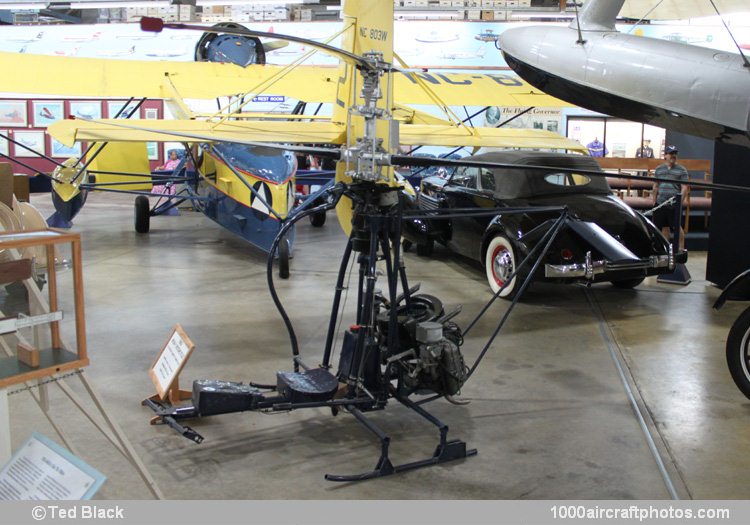06/05/2016. Remarks by Walter van Tilborg: "Gyrodyne Company of America founded by Peter James Papadokos started development of a light single-seat helicopter in 1949. The Rotorcycle design was built in several models, all of which had co-axial rotors. The Rotorcycle was one of several light (portable) helicopters of which development was initiated by the US Navy Office of Naval Research and intended for potential use by the USMC. Only some fifteen Rotorcycles were produced in the following versions.
GCA-41 Rotorcycle. Two prototype aircraft a 40 hp Nelson H-59 two-stroke engine, a 15 ft (4.57 m) rotor diameter and a so called overhead control stick. Initially ordered under a USN contract as XHOG-1 these aircraft were redesignated XRON-1. The first flight took place on November 23, 1955.
GCA-41A Rotorcycle. Three service test models ordered by the USN under the designation YRON-1 for evaluation by the USMC in 1959-1960. These were fitted with a 55 hp Porsche YO-95-2 four-stroke engine. Also the rotor diameter had been increased to 17 ft (5.18 m) allowing increased operating weights.
GCA-41B Rotorcycle. One of the GCA-41/XRON-1 prototypes re-engined with a 62 hp Solar T-62 shaft-turbine engine, flown in this form in 1957.
GCA-59 Rotorcycle. Powered by a 72 hp Porsche YO-95-6 engine this improved version, again designated YRON-1 by the USN, had several airframe modifications, including a revised and stronger transmission system and 20 ft (6.10 m) rotors to accept the higher engine output. It also introduced a conventional control stick. At least one YRON-1 was flown with the 62 hp Solar T-62 shaft-turbine engine, another with a 55 hp Porsche YO-95 engine and 15 ft (4.57 m) rotors.
